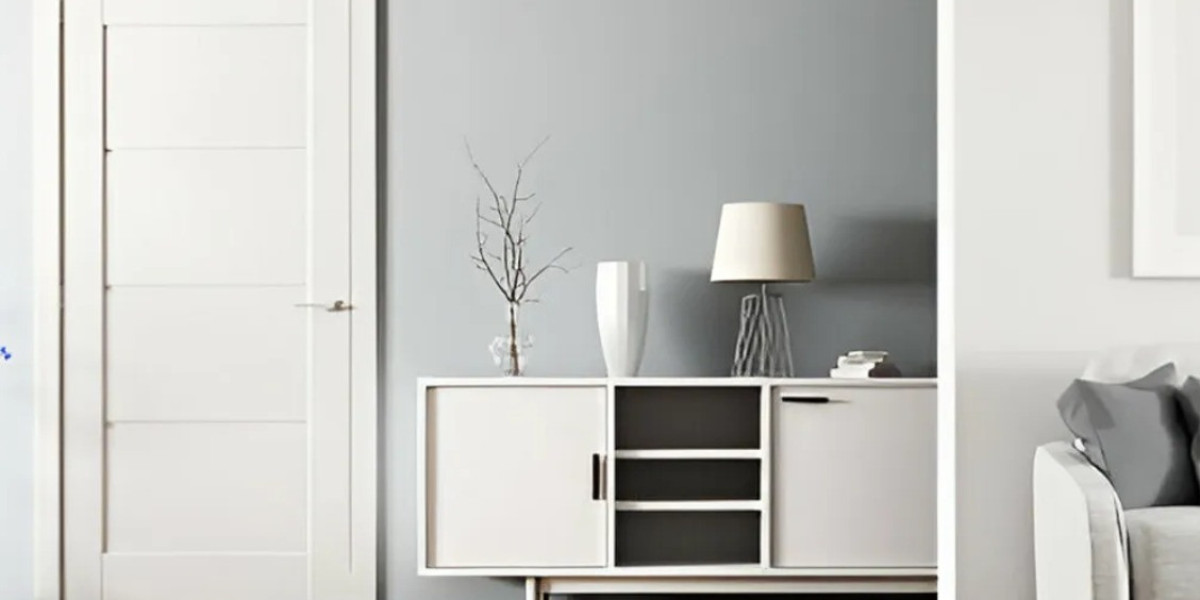When designing or renovating a home, interior doors play a crucial role in both functionality and aesthetics. They provide privacy, define spaces, and contribute to the overall style of your home. Among the different types of interior doors available, prehung interior doors and interior doors have become increasingly popular due to their convenience and ease of installation.
In this comprehensive guide, we’ll explore:
The importance of interior doors
Different types of interior doors
What prehung interior doors are and their benefits
How to choose the right interior door for your home
Installation tips for prehung doors
By the end of this article, you’ll have a clear understanding of how to select and install the best interior doors for your space.
1. The Importance of Interior Doors
Interior doors serve several essential purposes in a home:
Privacy & Noise Control
Doors separate rooms, ensuring privacy in bedrooms, bathrooms, and home offices. They also help reduce noise transfer between spaces, creating a more peaceful living environment.
Aesthetic Appeal
The style, material, and finish of interior doors contribute to the overall décor of a home. Whether you prefer modern, rustic, or traditional designs, the right door can enhance your interior design.
Space Definition
Doors help define different areas in an open floor plan, making spaces feel more structured and intentional.
Energy Efficiency & Insulation
Well-insulated interior doors can help maintain consistent temperatures between rooms, improving energy efficiency.
2. Types of Interior Doors
There are several types of interior doors, each with unique features and benefits:
Solid Wood Doors
Pros: Durable, high-quality, excellent soundproofing, timeless look.
Cons: Expensive, can warp in high humidity.
Hollow Core Doors
Pros: Lightweight, affordable, easy to install.
Cons: Less durable, poor sound insulation.
Solid Core Doors
Pros: Better soundproofing than hollow core, more durable, resists dents.
Cons: Heavier, more expensive than hollow core.
Glass Panel Doors
Pros: Allow natural light to flow, modern aesthetic.
Cons: Less privacy, may require frequent cleaning.
French Doors
Pros: Elegant, great for separating spaces while maintaining openness.
Cons: Requires more space to swing open.
Barn Doors
Pros: Space-saving, stylish, great for modern and rustic homes.
Cons: Less soundproofing, may not seal tightly.
Pocket Doors
Pros: Space-saving, slides into the wall.
Cons: Difficult to install, limited soundproofing.
3. What Are Prehung Interior Doors?
A prehung interior door comes already mounted into a frame with hinges attached, making installation much easier than installing a slab door (a door without a frame).
Components of a Prehung Door:
Door slab – The actual door.
Door frame (jamb) – The surrounding structure that holds the door.
Hinges – Typically pre-installed (usually 3 hinges).
Door stop molding – Pre-attached to the frame to prevent the door from swinging too far.
Benefits of Prehung Doors:
✅ Easier Installation – Since the door is already fitted into the frame, alignment issues are minimized.
✅ Better Fit – The frame is pre-cut for the door, reducing gaps and misalignment.
✅ Time-Saving – No need to mortise hinges or build a frame from scratch.
✅ Professional Finish – Ensures a clean, seamless look when installed correctly.
When to Choose a Prehung Door:
If you’re replacing an old door and frame.
If you’re installing a door in a new opening.
If you want a hassle-free installation process.
Prehung vs. Slab Doors:
| Feature | Prehung Door | Slab Door |
|---|---|---|
| Installation | Easier, frame included | Requires separate frame and hinge mortising |
| Cost | Slightly more expensive | More affordable |
| Best For | New construction, full replacements | Replacing just the door (if frame is intact) |
4. How to Choose the Right Interior Door
Consider the Room’s Function
Bedrooms & Bathrooms: Solid core or solid wood for privacy and noise reduction.
Closets & Pantries: Hollow core or sliding doors for cost efficiency.
Living Areas: Glass panel or French doors for an open, airy feel.
Match Your Home’s Style
Modern Homes: Flush doors, glass panels, or barn doors.
Traditional Homes: Paneled wood doors with classic molding.
Rustic/Farmhouse: Wooden doors with natural finishes or barn doors.
Measure Correctly
Before purchasing, measure:
Door width & height (Standard size: 30” x 80”).
Rough opening size (Frame width + 2” for prehung doors).
Swing direction (Left-hand or right-hand).
Material & Budget
Budget-friendly: Hollow core or MDF doors.
Mid-range: Solid core or engineered wood.
High-end: Solid wood or custom-designed doors.
5. Installing a Prehung Interior Door
Tools Needed:
Level
Shims
Screwdriver
Hammer & nails
Drill
Step-by-Step Installation:
Remove the Old Door & Frame (if replacing).
Dry Fit the Prehung Door – Place it in the opening to check alignment.
Shim the Frame – Ensure it’s level and plumb before securing.
Secure the Frame – Nail or screw into the wall studs.
Check the Swing – Make sure the door opens and closes smoothly.
Add Trim & Caulk – Finish with door casing and seal gaps.
Common Mistakes to Avoid:
Not checking for level and plumb before securing.
Over-tightening screws, which can warp the frame.
Skipping shims, leading to an uneven fit.
Conclusion
Choosing the right interior door—whether a standard slab or a prehung interior door—can significantly impact your home’s functionality and style. Prehung doors offer a streamlined installation process, making them ideal for renovations and new construction.
By considering factors like material, room function, and design preferences, you can select the perfect door for your space. And if you opt for a prehung door, following proper installation steps will ensure a professional, long-lasting result.
Upgrading your interior doors is a simple yet effective way to enhance your home’s comfort, privacy, and aesthetic appeal. Whether you’re a DIY enthusiast or hiring a professional, the right door can make all the difference!







